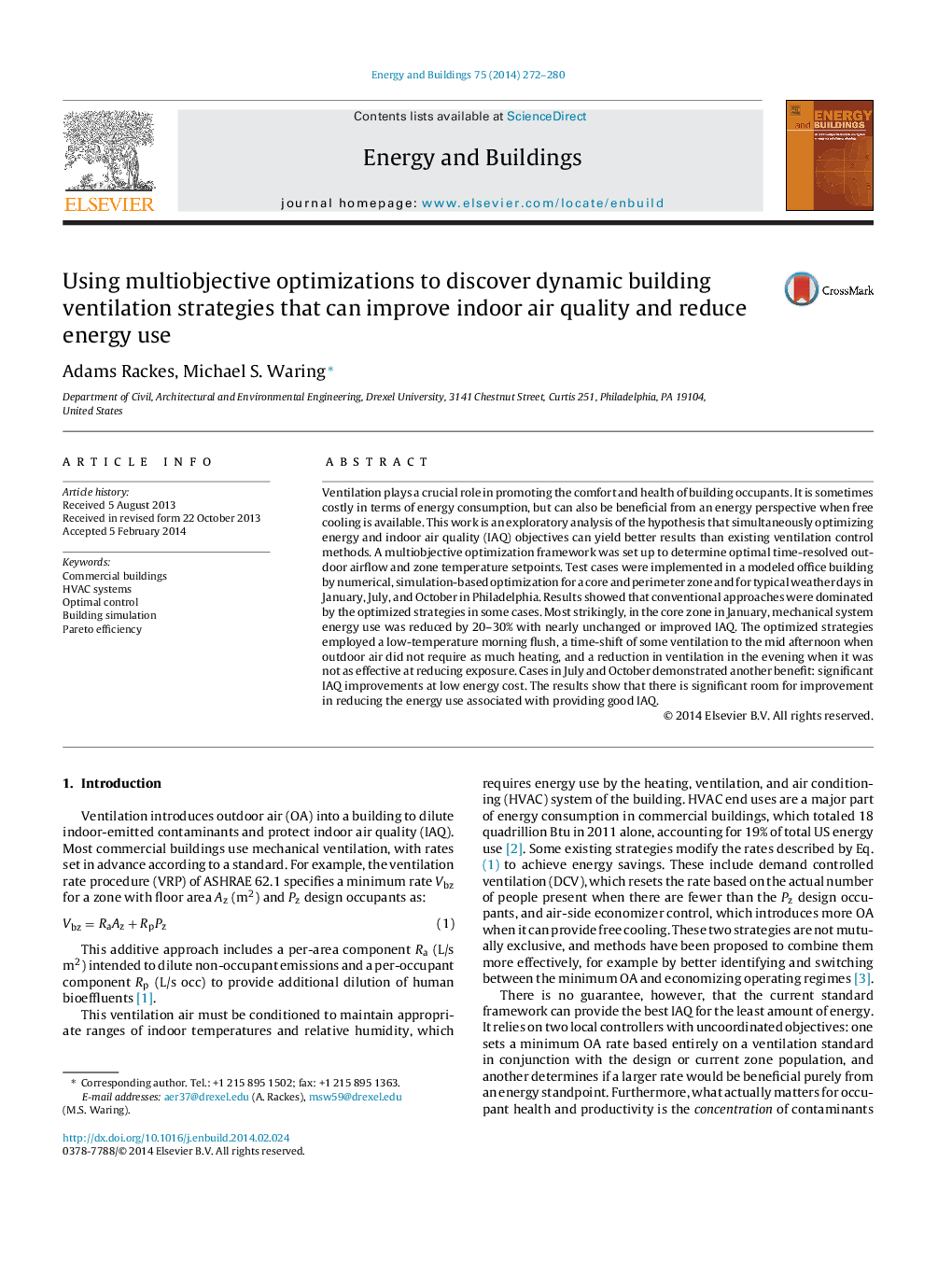| Article ID | Journal | Published Year | Pages | File Type |
|---|---|---|---|---|
| 6733925 | Energy and Buildings | 2014 | 9 Pages |
Abstract
Ventilation plays a crucial role in promoting the comfort and health of building occupants. It is sometimes costly in terms of energy consumption, but can also be beneficial from an energy perspective when free cooling is available. This work is an exploratory analysis of the hypothesis that simultaneously optimizing energy and indoor air quality (IAQ) objectives can yield better results than existing ventilation control methods. A multiobjective optimization framework was set up to determine optimal time-resolved outdoor airflow and zone temperature setpoints. Test cases were implemented in a modeled office building by numerical, simulation-based optimization for a core and perimeter zone and for typical weather days in January, July, and October in Philadelphia. Results showed that conventional approaches were dominated by the optimized strategies in some cases. Most strikingly, in the core zone in January, mechanical system energy use was reduced by 20-30% with nearly unchanged or improved IAQ. The optimized strategies employed a low-temperature morning flush, a time-shift of some ventilation to the mid afternoon when outdoor air did not require as much heating, and a reduction in ventilation in the evening when it was not as effective at reducing exposure. Cases in July and October demonstrated another benefit: significant IAQ improvements at low energy cost. The results show that there is significant room for improvement in reducing the energy use associated with providing good IAQ.
Related Topics
Physical Sciences and Engineering
Energy
Renewable Energy, Sustainability and the Environment
Authors
Adams Rackes, Michael S. Waring,
